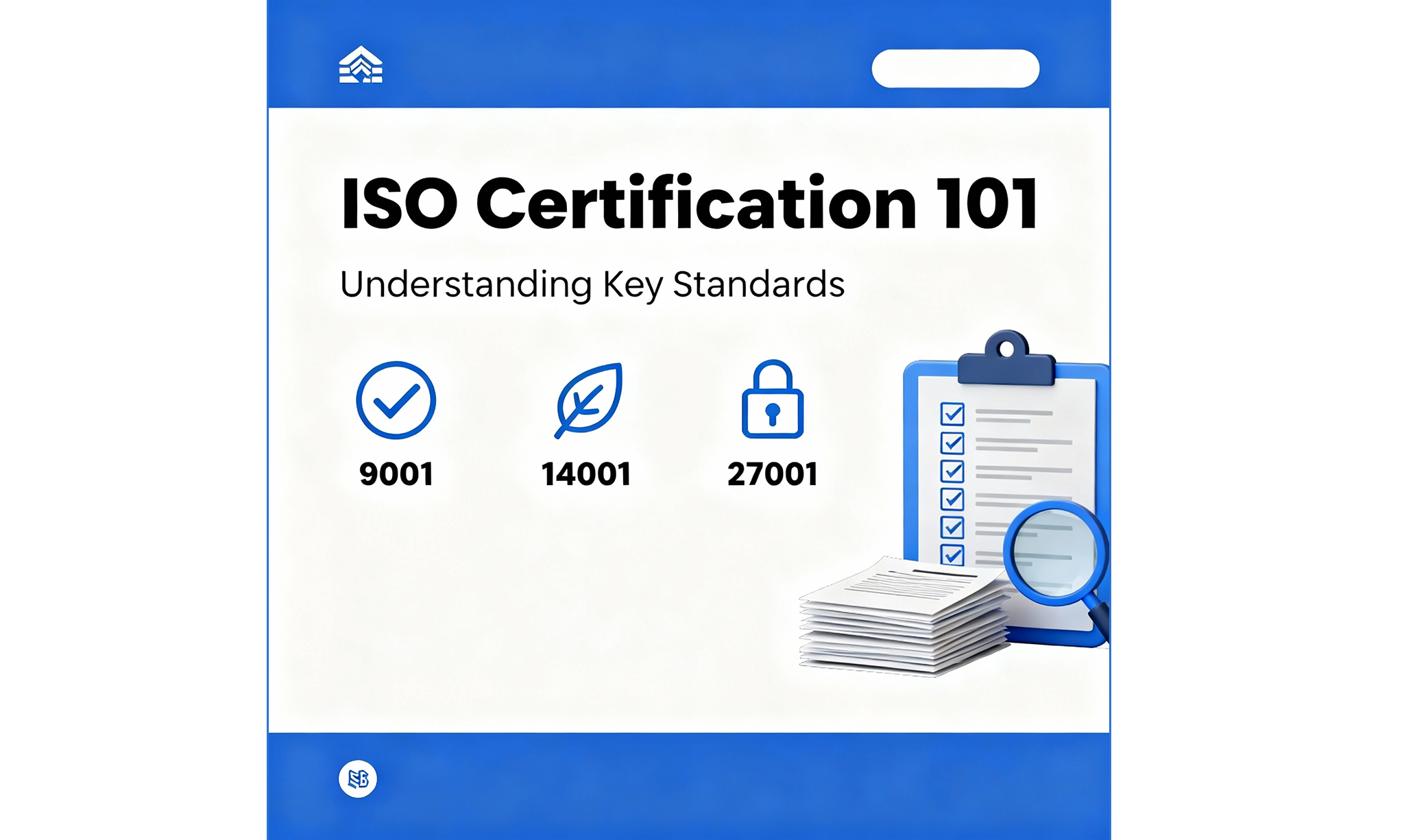ISO certification is a third‑party attestation that an organization’s management system meets an international ISO standard, helping prove quality, safety, security, and efficiency to customers, regulators, and partners.
Meaning
ISO is the International Organization for Standardization, a global, independent body that publishes consensus‑based standards used worldwide; certification is issued not by ISO itself but by accredited certification bodies after an external audit against a specific standard’s requirements. ISO certification adds credibility by showing products, services, and processes align with international best practices and customer expectations.
Popular types
- ISO 9001 (Quality Management System): Improves process control and customer satisfaction across any industry.
- ISO 14001 (Environmental Management): Framework to manage environmental aspects and compliance.
- ISO 45001 (Occupational Health & Safety): System to reduce workplace risks and improve safety performance.
- ISO 27001 (Information Security): Controls to protect information assets and meet cyber‑security expectations.
- ISO 22000/HACCP (Food Safety): For food chain organizations to manage hazards and ensure safe products.
- ISO 13485 (Medical Devices QMS): Quality system requirements specific to medical devices and regulatory needs.
- ISO 20000 (IT Service Management): Establishes and maintains a service management system for reliable IT services.
- ISO 22301 (Business Continuity): Plans and controls to continue operations during disruptions.
- ISO 50001 (Energy Management): Systematic energy performance improvement and cost control.
- ISO 26000 (Social Responsibility): Guidance on responsible business conduct; note it is guidance, not certifiable.
Certification process
- Choose the right standard: Map business goals, risks, industry, and customer requirements to select the applicable ISO standard(s).
- Gap analysis: Compare current processes and controls with the standard’s clauses to identify remediation needs.
- Implement and document: Establish policies, procedures, records, controls, and training to meet requirements and demonstrate conformity.
- Internal audit: Independently verify the management system’s effectiveness and conformity; raise and close nonconformities.
- Management review: Top management evaluates performance, risks, opportunities, and resources before certification audit.
- Certification audit (Stage 1 & 2): An accredited certification body reviews documented readiness and on‑site implementation; successful clients receive a certificate typically valid three years with annual surveillance audits.
Benefits
- Market trust and credibility: Recognized proof of meeting international benchmarks helps win tenders and enterprise supply‑chain approvals.
- Customer satisfaction and quality: Structured processes reduce defects, delays, and variation, improving experience and retention.
- Operational efficiency and cost control: Clear SOPs, roles, KPIs, and risk‑based thinking streamline operations and reduce rework.
- Risk and compliance: Systematic identification and control of legal, security, safety, and environmental risks.
- Access to new markets: Many sectors and governments prefer or require ISO‑certified suppliers.
Cost and time factors
Certification cost and duration depend on organization size, complexity, number of sites, process maturity, and chosen certification body; multi‑site or regulated industries generally require more audit time and investment. Preparation can range from a few weeks for small, mature teams to several months where new processes and training are needed before an external audit.
Implementation tips for Indian SMBs
- Prioritize ISO 9001 first to institutionalize process discipline, then add domain standards like ISO 27001 (IT) or ISO 22000 (food) as required by clients.
- Engage an accredited certification body and avoid “instant certificates”; genuine certification requires audits and surveillance.
- Use gap assessment checklists and train internal auditors early to sustain compliance post‑certification.
Frequently asked
- Does ISO certify companies? No—ISO publishes standards; accredited certification bodies issue certificates after audits.
- Is ISO 26000 certifiable? No; it’s guidance on social responsibility and not intended for certification.
- How long is a certificate valid? Commonly three years with annual surveillance and a recertification audit at the end of the cycle.
If this blog is for your SEO clients in India, map keywords like “ISO certification in India,” “ISO 9001 certification process,” and “benefits of ISO certification for SMEs,” and include schema for Service and FAQ to target tender‑driven queries and B2B leads from Chandigarh/Punjab searches.
